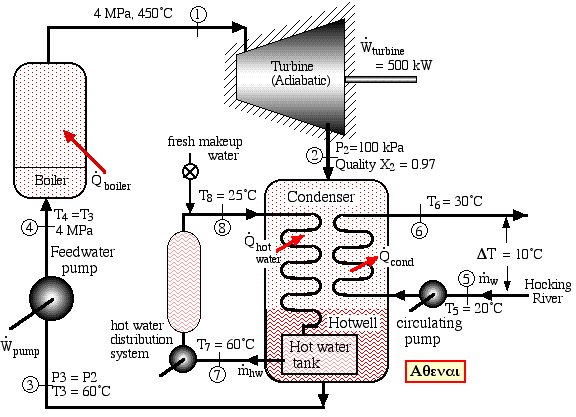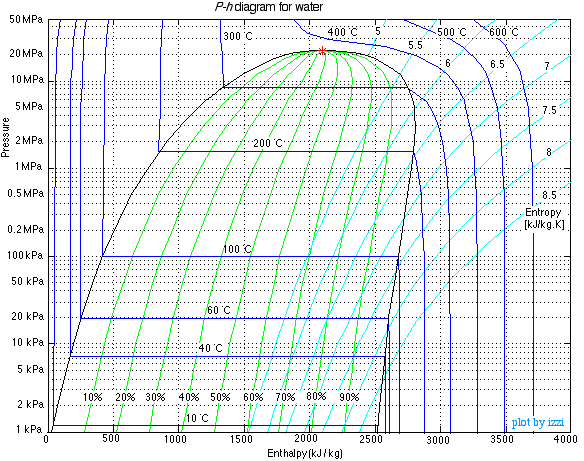
Cogeneration or Combined Heat and Power (CHP) is the utilization of 2 forms of energy from 1 source i.e.: hot water/heat and electricity from one gen-set.
According to the American Council for an Energy Efficient Economy (ACEEE), the world's first commercial power plant - Thomas Edison's Pearl Street Station built in 1882 - was a cogeneration plant as it made and distributed both electricity and thermal energy, thus the concept has been around for many years, With the recent interest in greener energy technologies it is currently becoming more popular.
This brings us to the current problem statement: In an effort to decentralize the power grid and utilize the waste heat which accompanies power generation, the Athenai Power Consulting Corp. has proposed a Cogeneration system for O'Bleness Hospital to provide both 500kW electric power and hot water at 60°C. The basic approach to this unique design is shown in the following schematic diagram:

A unique aspect of the power plant is that the turbine output is at 100kPa close to 100°C. This high pressure output both eliminates the need for a deaerator and the condenser will be able to directly heat the water to the required 60°C. During the lull period when no hot water is required, water is drawn from the Hocking River to condense and subcool the steam in the hotwell to 60°C. As a young engineer at Athenai your purpose is to evaluate the basic design and discuss its effectiveness.
a) Neatly sketch the complete cycle on the pressure-enthalpy P-h diagram below, indicating clearly stations (1), (2), (3), and (4) on the diagram. Once this is done then use the Steam Tables to determine the following:
b) Determine the mass flow rate of the steam through the cycle required in order to provide the turbine output power of 500kW [0.691 kg/s]
c) Determine the power required to drive the feedwater pump [2.69 kW].
d) Determine the overall thermal efficiency ηth of this power plant. (Recall that thermal efficiency is defined as the net work done divided by the total heat supplied externally to the boiler [23%]
e) Determine the cooling power in the condenser required to condense the steam exiting the turbine at station (2) and subcool the condensed steam to 60°C at station (3) [-1628 kW]
f) Assuming that the water in the hot water distribution system is heated from 25°C to 60°C, and that no river cooling is provided, determine the mass flow rate of the hot water required to subcool the condenser water to 60°C [11.1 kg/s]
g) In the lull period when no hot water is required, determine the mass flow rate of water from the Hocking River required to subcool the condenser water to 60°C. Note that the river water temperature rise must not exceed 10°C [39 kg/s]
h) Discuss the proposed system with respect to its environmental impact and feasibility.
Justify all values used and derive all equations used starting from the basic energy equation for a flow system, the basic definition of thermal efficiency ηth, and the enthalpy change of incompressible liquid water Δh.

_____________________________________________________________________________________